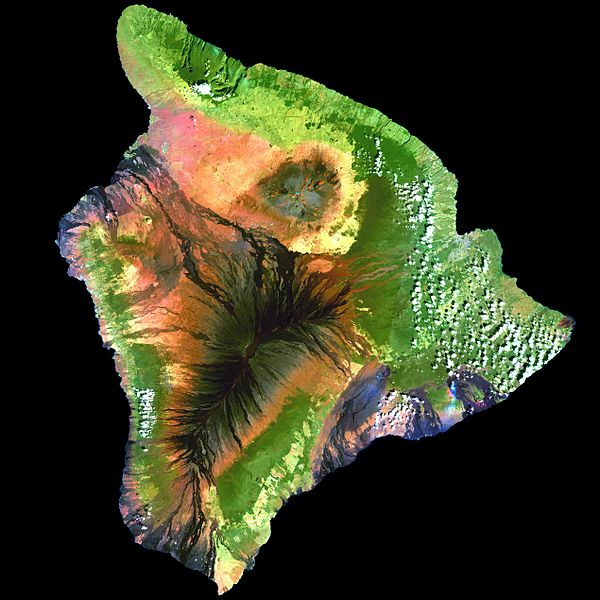File:Island of Hawai'i - Landsat mosaic.jpg
外觀

預覽大小:600 × 600 像素。 其他解析度:240 × 240 像素 | 480 × 480 像素 | 768 × 768 像素 | 1,024 × 1,024 像素 | 2,048 × 2,048 像素 | 5,076 × 5,076 像素。
原始檔案 (5,076 × 5,076 像素,檔案大小:5.19 MB,MIME 類型:image/jpeg)
檔案歷史
點選日期/時間以檢視該時間的檔案版本。
| 日期/時間 | 縮圖 | 尺寸 | 使用者 | 備註 | |
|---|---|---|---|---|---|
| 目前 | 2009年9月1日 (二) 11:59 |  | 5,076 × 5,076(5.19 MB) | Túrelio | saved with 95% quality (low compression), but without "progressive" option |
| 2009年9月1日 (二) 11:59 |  | 5,076 × 5,076(4.9 MB) | Bidgee | Fix thumbnail generation issue caused by progressive loading. | |
| 2009年9月1日 (二) 11:31 |  | 5,076 × 5,076(4.91 MB) | Rocket000 | reuploading | |
| 2007年12月27日 (四) 11:52 |  | 5,076 × 5,076(4.91 MB) | Avenue | {{Information| |Description=This simulated true-color image of the island of Hawai'i was derived from data gathered by the Enhanced Thematic Mapper plus (ETM+) on the Landsat 7 satellite between 1999 and 2001. |Source=[http://veimages.gsfc.nasa.gov/2712/l |
檔案用途
下列頁面有用到此檔案:
全域檔案使用狀況
以下其他 wiki 使用了這個檔案:
- af.wikipedia.org 的使用狀況
- ar.wikipedia.org 的使用狀況
- ast.wikipedia.org 的使用狀況
- az.wikipedia.org 的使用狀況
- be.wikipedia.org 的使用狀況
- bn.wikipedia.org 的使用狀況
- br.wikipedia.org 的使用狀況
- ca.wikipedia.org 的使用狀況
- ceb.wikipedia.org 的使用狀況
- cy.wikipedia.org 的使用狀況
- de.wikipedia.org 的使用狀況
- de.wikivoyage.org 的使用狀況
- en.wikipedia.org 的使用狀況
- Hawaii (island)
- Mauna Loa
- Landsat program
- Geoinformatics
- Puna, Hawaii
- User:Spikebrennan
- Portal:Hawaii/Selected article
- Portal:Hawaii/Selected article/11
- Wikipedia:Featured picture candidates/February-2008
- Wikipedia:Featured picture candidates/Big Island of Hawai'i
- User:Hawaiian Mafia
- User:Aoi/sandbox
- es.wikipedia.org 的使用狀況
- es.wikibooks.org 的使用狀況
- eu.wikipedia.org 的使用狀況
- fa.wikipedia.org 的使用狀況
- fr.wikipedia.org 的使用狀況
- fr.wikivoyage.org 的使用狀況
- ga.wikipedia.org 的使用狀況
- haw.wikipedia.org 的使用狀況
- he.wikipedia.org 的使用狀況
- hi.wikipedia.org 的使用狀況
- hu.wikipedia.org 的使用狀況
- ia.wikipedia.org 的使用狀況
- id.wikipedia.org 的使用狀況
- incubator.wikimedia.org 的使用狀況
- is.wikipedia.org 的使用狀況
- ja.wikipedia.org 的使用狀況
檢視此檔案的更多全域使用狀況。


